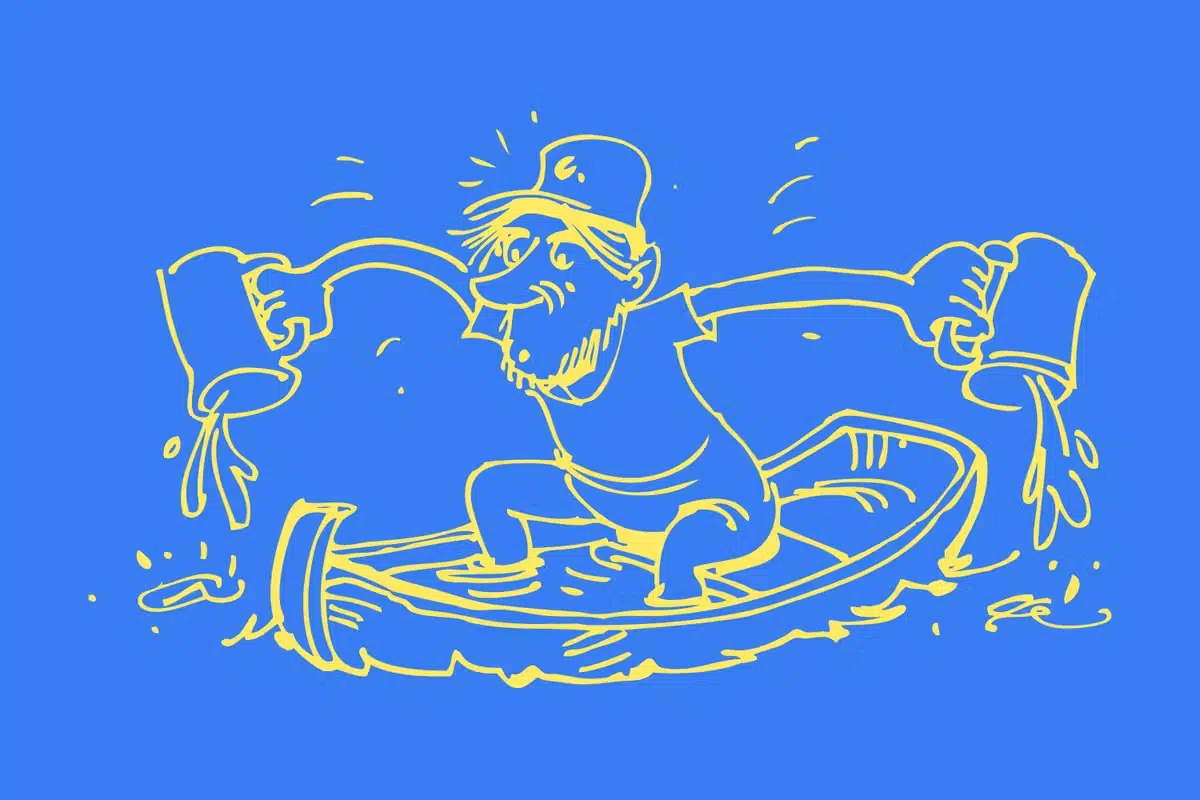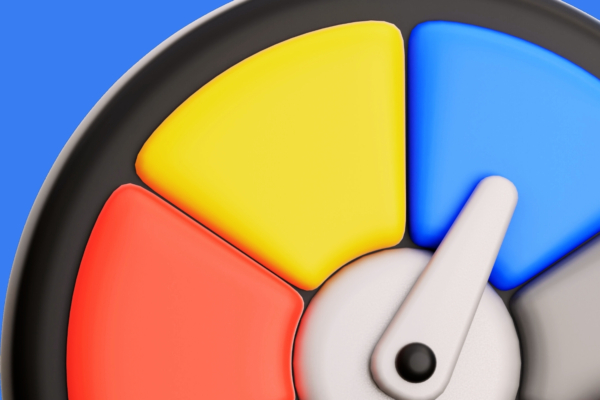
Credit Card Debt: What It Is, How It Works, and How to Get Out

In the U.S. credit cards are now a commonly accepted form of payment. In fact, according to the Federal Reserve, 84 percent of American adults had a credit card in 2021. But while the adoption of credit cards may be widespread, that doesn’t mean that credit card use is always a positive experience.
If used correctly, credit cards can be a powerful financial tool for the good. But without the information on how to use them safely, credit cards can open doors to mountains of debt. It’s important to understand what credit card debt is, how credit cards work, and how to avoid credit card debt altogether—or pay it off if you already have some. Here, we’ll also explain how to pay off credit card debt if you’re already overwhelmed by a growing balance.
What Is a Credit Card?
For many, a credit card is just a handy piece of plastic that you use to buy things. While that is a simple definition of a credit card, there’s an added layer of complexity.
Essentially, when you pay with a credit card, you are taking out a short-term loan from the credit card issuer. The credit card pays money to the vendor in exchange for goods you purchase, with the agreement that you’ll pay them back when the credit card bill comes due.
When we say short-term, we mean thirty days short. Some credit cards have a longer introductory period where you may pay 0% interest or only the minimum without being hit with interest, but the “loan” is calculated in monthly cycles.
How Does Credit Card Debt Work?
It’s when the bill comes due that many Americans make a common mistake. According to the Federal Reserve, about half of credit card holders carried a balance from month to month in the past year. This means those card holders only made their minimum payment every month, just enough to avoid late fees. And this is how credit card debt becomes so overwhelming you think you may never escape.
As with all lenders, credit card companies charge a fee in the form of interest for the use of the money you borrow—but only if you don’t pay off the full balance every month. If you pay your “short-term loan” off every thirty days, you won’t owe any interest. If you don’t pay the entire balance due, you will pay interest on the amount left on the account.
Unfortunately for credit card holders who carry a balance every month, those interest rates are high, and getting higher as the Fed hikes interest rates to combat inflation. In fact, the average interest rate on consumer credit cards hit its highest point since the Federal Reserve began tracking annual percentage rates in 1994, topping out in May 2023 at 20.09%.
Carrying your credit card balance from month to month is never a good idea, but combined with higher interest rates, this balance can have a huge impact on your ability to create a secure financial future. Just consider the following scenario:
Say you have a balance of $5000 on a credit card with the average APR of 20.09%. If you choose to pay the minimum amount of $100 per month—without using the card for any additional purchases—it will take you over 9 years to pay the card off in full. In the process, you will also pay $5,928 in interest. That’s more than the cost of your original purchase! (Curious about your own numbers? Here’s the calculator we used.)
How to Avoid Credit Card Debt
The simplest way to avoid credit card debt altogether is simple: don’t use a credit card. For folks that struggle with debt, avoiding a credit card altogether might be the way to go.
However, the use of a credit card can be a huge bonus for your overall credit history, showing that you have a positive history of borrowing and paying money. If done correctly, the use of credit cards can actually help you build greater financial security.
So, how can you avoid credit card debt while still using a credit card? Follow these steps:
- Think of your credit card as a short-term loan. When you approach the use of your credit card with the mindset that it’s borrowed money—not “free money”—you’ll be more likely to think twice before you swipe your card. If you wouldn’t take out a loan for your purchase, you probably shouldn’t be using your credit card to pay for it.
- Pay off the balance each month. The most surefire way to avoid a credit card debt spiral is to pay off your balance in full every single time. As you saw in the example above, if you only make the minimum payment, it doesn’t take long for interest charges to outstrip the cost of your original purchase.
- Never skip a payment. If you make a late payment, you can trigger fees and even higher interest rates on your card. Late payments also negatively impact your credit history. If you have the steady income to cover it, putting payments on autopay is a great way to make sure you don’t miss payments by mistake. If you’re struggling to make a payment, at least pay the minimum to avoid a late fee.
- Keep an eye on your credit card activity. Always review your credit card activity and statements to make sure you don’t become a victim of fraud. If your card is stolen and you don’t report unauthorized charges quickly, you may be liable for the cost. Most credit card companies offer apps that allow you to track purchases in real time, and alert systems for suspicious activity. It’s a good idea to download your credit card company’s app if you haven’t yet.
How to Get Out of Credit Card Debt
If it’s too late to avoid credit card debt altogether, don’t despair. You’re not alone. The average credit card debt per household in 2022 was $7,951. While any amount of credit card debt can seem overwhelming, it is possible to pay off all your credit card balances. Here are a few ways to get your credit card bills under control:
1. Stop using your credit card.
The first step toward getting credit card debt under control is to stop adding to it. If you really want to get out of debt, put all your credit cards away (or cut them up if you have to), so that you’re not tempted to make any impulse purchases.
2. Make a list of your outstanding credit card balances.
To pay off all your debt, you need to know exactly how much you have. Look at all your credit card statements and write down the balance for each, along with the interest rate.
3. Reevaluate your budget.
You’ll need to put more than the minimum payment toward your debt each month, so take a moment to reassess your current spending and make a budget. Is there anything you can cut back on each month? If so, use the money you “save” to put toward your debt.
4. Use the avalanche debt payoff method.
Following this strategy, you pay off the credit card balance with the highest interest rate first. Earmark any extra cash you have as a result of trimming your spending for debt payments to this account, but continue to make minimum payments on all your other credit cards. Once paid in full, take the total amount you were paying on this card and make payments on the balance with the next highest interest rate.
5. Or, use the snowball debt payoff method.
If you’re looking for a little extra motivation to keep going, the snowball method might be a better fit for you. Looking at your list, find the credit card account with the smallest balance. Use any extra cash to pay off this balance first, continuing to make the minimum payments on all other cards. Once the smallest balance is paid off, funnel the full amount you were paying on the first balance to the second smallest balance, continuing until you’ve eliminated all your credit card debt.
6. Consolidate your debt.
Some find it easier to feel in control of their debt by consolidating it into a single account. There are some pros to this option, namely that you’ll only have one payment each month to keep track of and the interest rate is usually lower. Two common debt consolidation options are:
- Home Equity Loan. If you own your home, you might consider using a home equity loan (HEL) to consolidate your debt. Interest rates are almost always lower than what the credit card companies charge, and you’ll only have one monthly payment. However, your house is used as collateral, so be sure you can make those payments—otherwise you could risk your home.
- 0% interest balance transfer credit card. Many credit card companies offer low- or no-interest introductory offers if you open a new card with them. If you don’t want to take out a loan, you can transfer your outstanding balances to a no-interest card to consolidate your debt (heads up: there’s usually a fee to transfer balances). But beware, if you choose this tactic, you must pay off all or most of your debt during the introductory, 0% interest period. After that period is over, the low- to no-interest promotion ends, and if you still have a balance, it will start accruing interest at the regular, higher rate.
Take Control of Your Credit Card
Credit cards can be an amazing tool in your financial toolbox, but be sure you understand what you’re getting into when you swipe that piece of plastic. Keep these tips in mind to make sure your credit cards work for you, and not the other way around!


